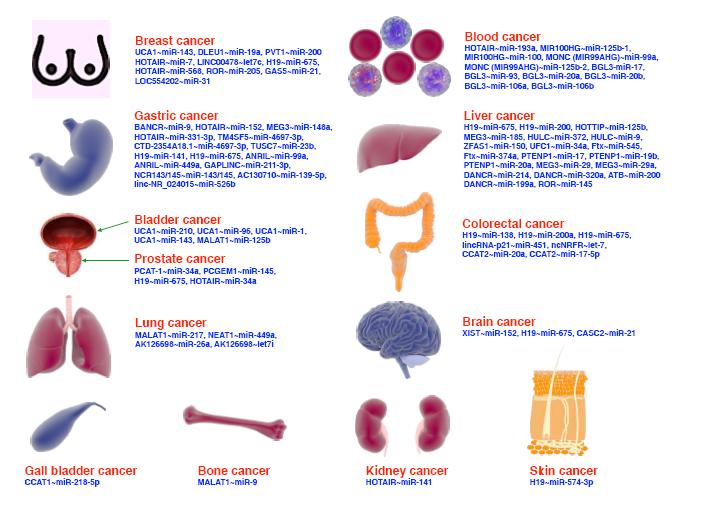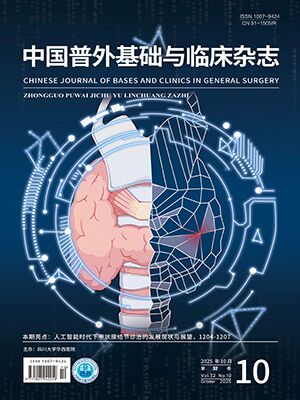| 1. |
Siegel RL, Giaquinto AN, Jemal A. Cancer statistics, 2024. CA Cancer J Clin, 2024, 74(1): 12-49.
|
| 2. |
Giaquinto AN, Sung H, Newman LA, et al. Breast cancer statistics 2024. CA Cancer J Clin, 2024, 74(6): 477-495.
|
| 3. |
邬昊, 吕青. 全球及中国乳腺癌的流行病学趋势及防控启示: 2018–2022年《全球癌症统计报告》解读. 中国普外基础与临床杂志, 2024, 31(7): 796-802.
|
| 4. |
Colwell AS, Taylor EM. Recent advances in implant-based breast reconstruction. Plast Reconstr Surg, 2020, 145(2): 421e-432e. doi: 10.1097/PRS.0000000000006510.
|
| 5. |
Yang H, Liang F, Xie Y, et al. Single axillary incision reverse-order endoscopic nipple/skin-sparing mastectomy followed by subpectoral implant-based breast reconstruction: Technique, clinical outcomes, and aesthetic results from 88 preliminary procedures. Surgery, 2023, 174(3): 464-472.
|
| 6. |
Zhou J, Xie Y, Liang F, et al. A novel technique of reverse-sequence endoscopic nipple-sparing mastectomy with direct-to-implant breast reconstruction: medium-term oncological safety outcomes and feasibility of 24-h discharge for breast cancer patients. Int J Surg, 2024, 110(4): 2243-2252.
|
| 7. |
贺湘眉, 侯兰, 王东辉, 等. 腔镜下乳腺癌根治术并全胸肌后乳房植入物重建的临床应用. 中国修复重建外科杂志, 2024, 38(7): 786-792.
|
| 8. |
夏鑫, 郭趣, 卢爽, 等. 我国日间手术研究现状与分析. 全科护理, 2023, 21(18): 2482-2485.
|
| 9. |
冯玉, 谢妍妍, 梁法清, 等. 日间乳腺癌皮下单纯切除术后一期假体重建的华西经验. 中国普通外科杂志, 2021, 30(5): 543-550.
|
| 10. |
Marla S, Stallard S. Systematic review of day surgery for breast cancer. Int J Surg, 2009, 7(4): 318-323.
|
| 11. |
Escobar-Domingo MJ, Bustos VP, Kim E, et al. The impact of race and ethnicity in outpatient breast reconstruction decision-making and postoperative outcomes: A propensity score-matched NSQIP analysis. J Plast Reconstr Aesthet Surg, 2024, 91: 343-352.
|
| 12. |
马雨薇, 修秉虬, 邵鼎轶, 等. 中文版Breast-Q信效度验证及其对于乳房满意度评估研究. 中国实用外科杂志, 2021, 41(6): 681-686.
|
| 13. |
骆雪, 孙义元, 马东扬, 等. 日归模式在经腹腹膜前腹腔镜疝修补术中的应用效果. 中国普外基础与临床杂志, 2024, 31(6): 706-711.
|
| 14. |
孙辉, 明敏馨, 马旭东. 我国二、三级医疗机构日间手术发展现状分析. 中国医院管理, 2022, 42(3): 48-51.
|
| 15. |
郭莉, 高兴莲, 柯稳, 等. 医疗机构日间手术开展及规范化管理现况调查. 中国护理管理, 2024, 24(4): 576-581.
|
| 16. |
Shaker H, Leena N, Mayers V, et al. Day-case approach to immediate breast reconstruction: pushing the boundaries of ambulatory breast surgery in the post-COVID-19 era. Ann R Coll Surg Engl, 2021, 103(6): 426-431.
|
| 17. |
郭丝锦, 樊菁, 张聚良, 等. 乳腺癌全麻日间手术管理模式的临床及社会价值. 中国医院管理, 2023, 43(4): 57-61.
|
| 18. |
杨媛, 余得水, 陈心足. 国家三级公立医院绩效考核导向下地市级三级公立医院发展日间手术的探索与实践. 中国普外基础与临床杂志, 2024, 31(5): 593-599.
|
| 19. |
陈益, 沈杨, 谢浩芬, 等. 日间手术精细化运营管理实践及体会. 中国医院, 2022, 26(8): 14-17.
|
| 20. |
凌瑞, 马力, 刘荫华, 等. 乳腺外科日间手术中国专家共识(2021版). 中国实用外科杂志, 2021, 41(11): 1201-1205.
|
| 21. |
Kuo YL, Chang CH, Chang TY, et al. Endoscopy-assisted total mastectomy with and without immediate reconstruction: An extended follow-up, multicenter study. Plast Reconstr Surg, 2021, 147(2): 267-278.
|
| 22. |
Xu X, Gao X, Pan C, et al. Postoperative outcomes of minimally invasive versus conventional nipple-sparing mastectomy with prosthesis breast reconstruction in breast cancer: a meta-analysis. J Robot Surg, 2024, 18(1): 274. doi: 10.1007/s11701-024-02030-5.
|
| 23. |
Rourke K, Halyk LJ, MacNeil J, et al. Perioperative protocols in ambulatory breast reconstruction: A systematic review. J Plast Reconstr Aesthet Surg, 2023, 85: 252-263.
|
| 24. |
窦雯, 田静静. 全程个案管理在乳腺癌保乳日间手术患者中的应用. 肿瘤基础与临床, 2024, 37(4): 465-467.
|
| 25. |
Mak JC, Kwong A. Complications in post-mastectomy immediate breast reconstruction: A ten-year analysis of outcomes. Clin Breast Cancer, 2020, 20(5): 402-407.
|
| 26. |
Bargon CA, Young-Afat DA, Ikinci M, et al. Breast cancer recurrence after immediate and delayed postmastectomy breast reconstruction—A systematic review and meta-analysis. Cancer, 2022, 128(19): 3449-3469.
|
| 27. |
Safran T, Al-Halabi B, Viezel-Mathieu A, et al. Direct-to-implant prepectoral breast reconstruction: patient-reported outcomes. Plast Reconstr Surg, 2021, 148(6): 882e-890e. doi: 10.1097/PRS.0000000000008506.
|
| 28. |
Geers J, Wildiers H, Van Calster K, et al. Oncological safety of autologous breast reconstruction after mastectomy for invasive breast cancer. BMC Cancer, 2018, 18(1): 994. doi: 10.1186/s12885-018-4912-6.
|
| 29. |
蔡明, 苟菊香. 甲状腺癌患者支持性照顾需求与生活质量的纵向调查分析. 中国普外基础与临床杂志, 2022, 29(7): 927-932.
|
| 30. |
Bouganim N, Tsvetkova E, Clemons M, et al. Evolution of sites of recurrence after early breast cancer over the last 20 years: implications for patient care and future research. Breast Cancer Res Treat, 2013, 139(2): 603-606.
|
| 31. |
Specht MC, Kelly BN, Tomczyk E, et al. One-year experience of same-day mastectomy and breast reconstruction protocol. Ann Surg Oncol, 2022, 29(9): 5711-5719.
|
| 32. |
Curtis NJ, Foster JD, Miskovic D, et al. Association of surgical skill assessment with clinical outcomes in cancer surgery. JAMA Surg, 2020, 155(7): 590-598.
|




